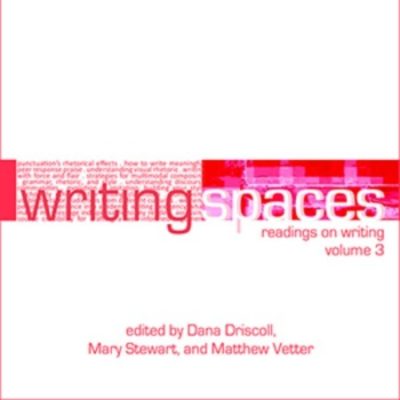18 Melanie Gagich’s “An Introduction to and Strategies for Multimodal Composing”
Writing Spaces Volume 3
Students are often shocked or confused when confronted with the task of creating a multimodal composition in a First-Year writing class. The reason for this hesitancy often stems from how the multimodal composition deviates from the typical expectations of the page so often associated with the word composition. Gagich pushes back on the traditional concept of text and defines it as “a piece of communication that can take many forms.” With this in mind, Gagich lays out in detail what considerations make up multimodal compositions, from the Five Modes of Communication to the benefits to students’ literacy both in and out of the classroom. Gagich also breaks down for students how to begin a multimodal project and lays out several considerations for students to remember as they begin creating texts. This chapter aims to demystify the multimodal composition and provide students with a framework for rethinking composition as just merely words on a page.
“While some students are thrilled to compose something other than an academic essay, others struggle to understand why they are required to create a multimodal text in a writing class. I assure my students that although they may not be familiar with the concept of multimodality, it has a long history in composition (e.g. writing studies).”
MLA Citation Examples
Works Cited
Gagich, Melanie. “An Introduction to and Strategies for Multimodal Composing.” Writing Spaces: Readings on Writing Volume 3, edited by Dana Driscoll, Mary Stewart, and Matthew Vetter, Parlor Press, 2020, pp. 65-85.
In-text citation
“While some students are thrilled to compose something other than an academic essay, others struggle to understand why they are required to create a multimodal text in a writing class. I assure my students that although they may not be familiar with the concept of multimodality, it has a long history in composition (e.g. writing studies)” (66).
References
Gagich, M. (2020). An introduction to strategies for multimodal composing. In Dana Driscoll, Mary Stewart and Matthew Vetter (Eds.), Writing spaces: readings on writing, vol. 3 (pp. 65-85). New York: Parlor Press.
In-text citation
“While some students are thrilled to compose something other than an academic essay, others struggle to understand why they are required to create a multimodal text in a writing class. I assure my students that although they may not be familiar with the concept of multimodality, it has a long history in composition (e.g. writing studies).” (Gagich, 2020, p. 66).
Chicago Citation Examples
Bibliography
Gagich, Melanie. “An Introduction to and Strategies for Multimodal Composing,” in Writing Spaces: Reading on Writing Volume 3, ed. Dana Driscoll, Mary Stewart, and Matthew Vetter (New York: Parlor Press, 2020), 65-85.
In-text citation
“While some students are thrilled to compose something other than an academic essay, others struggle to understand why they are required to create a multimodal text in a writing class. I assure my students that although they may not be familiar with the concept of multimodality, it has a long history in composition (e.g. writing studies).” (Gagich, 2020, 66).


